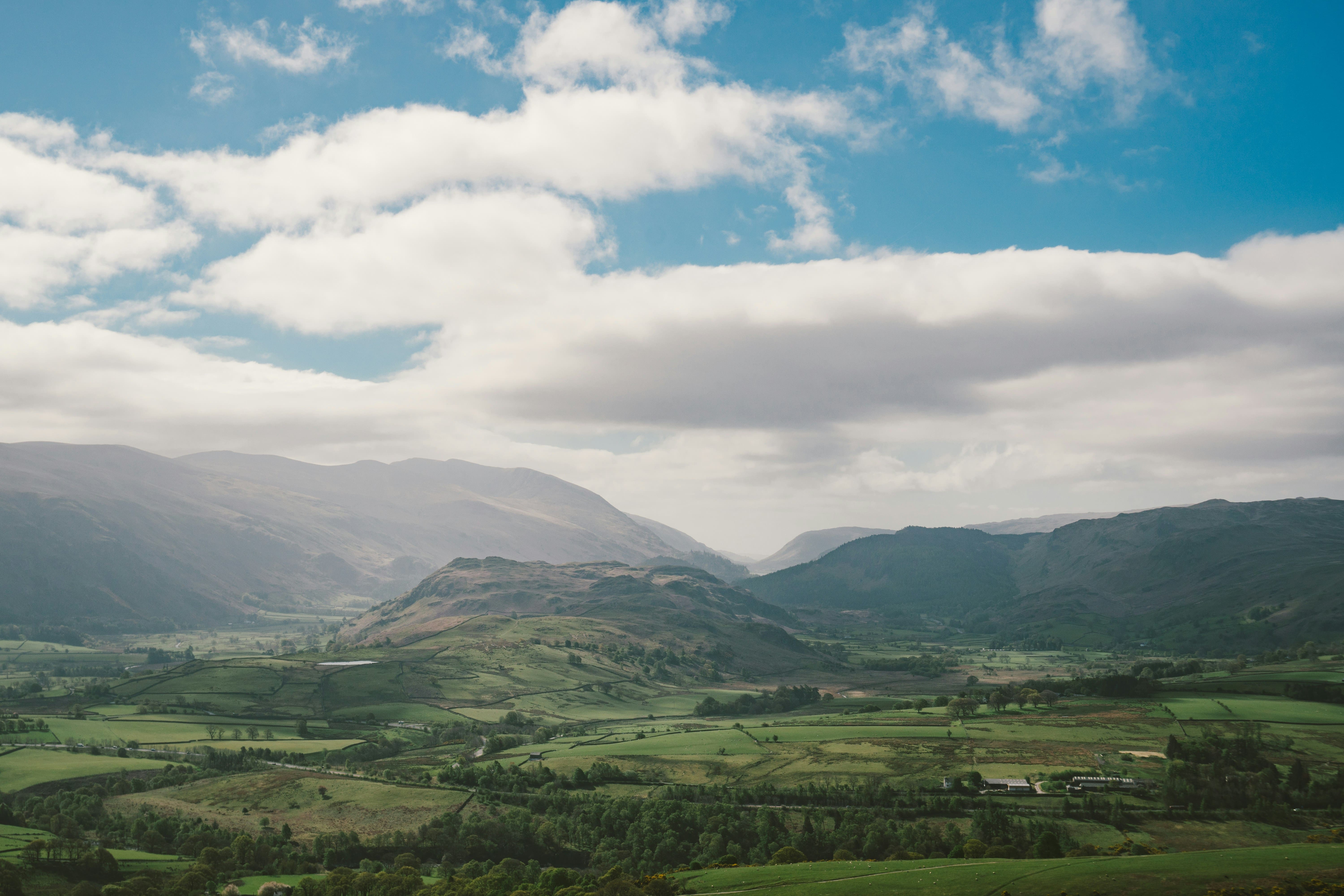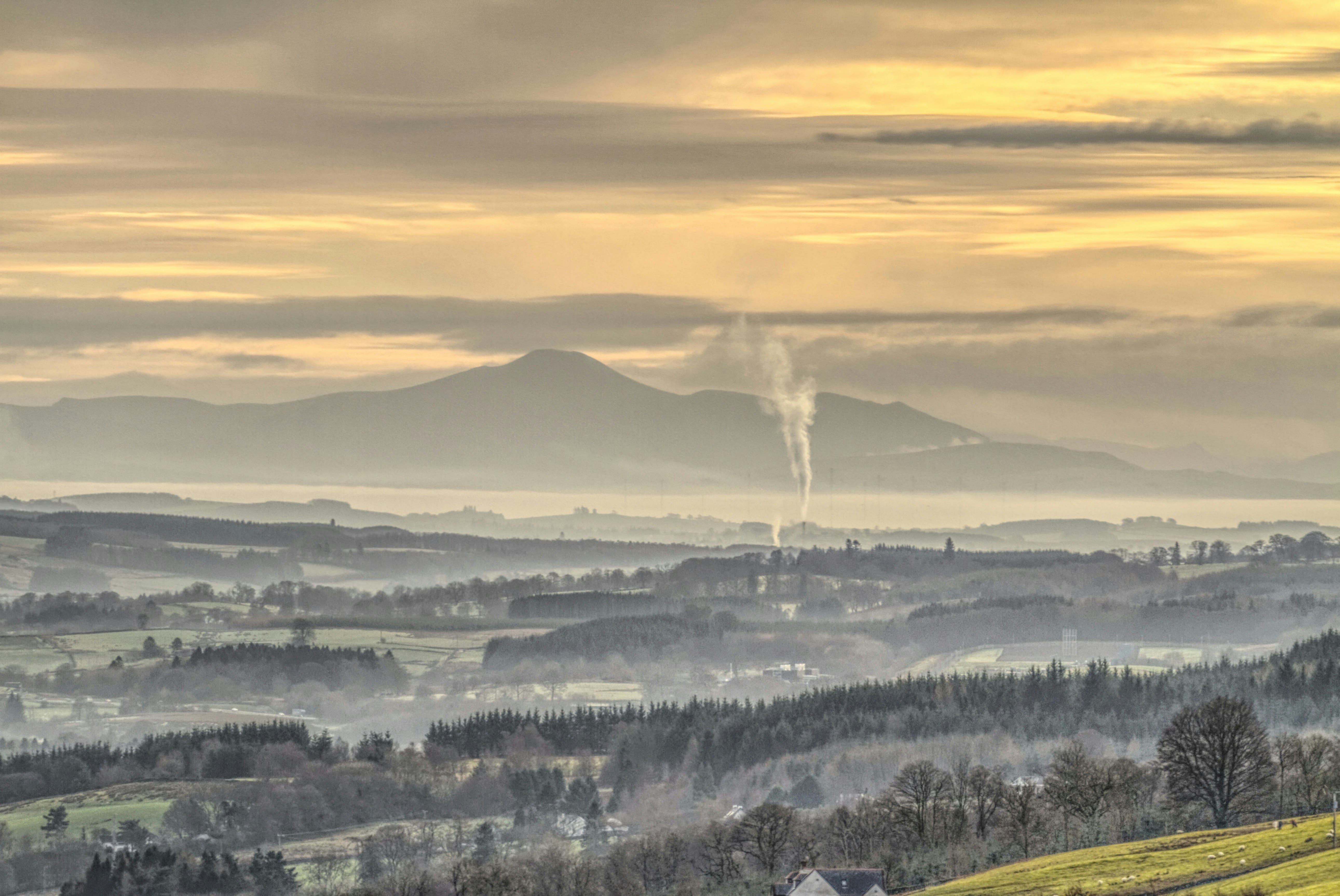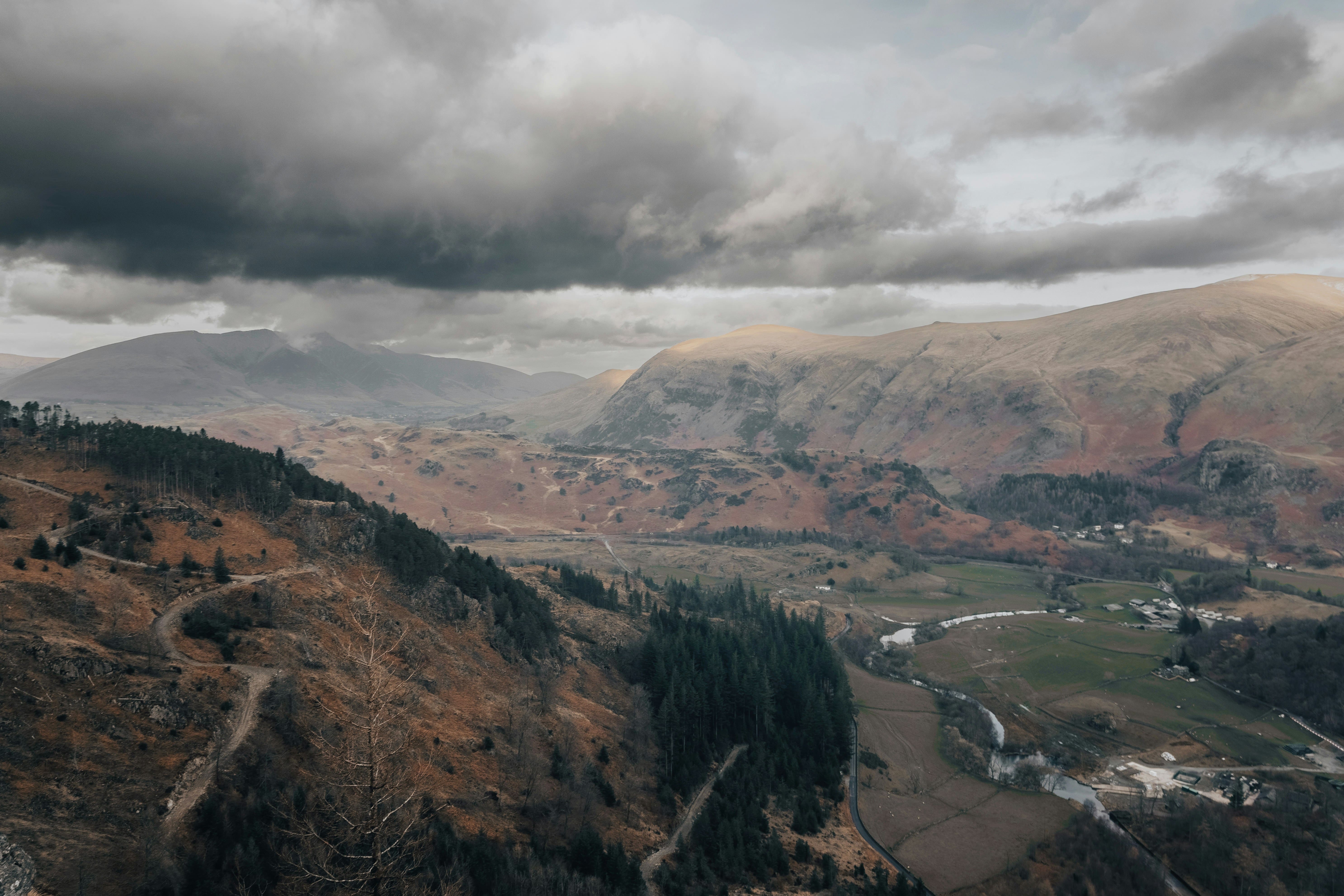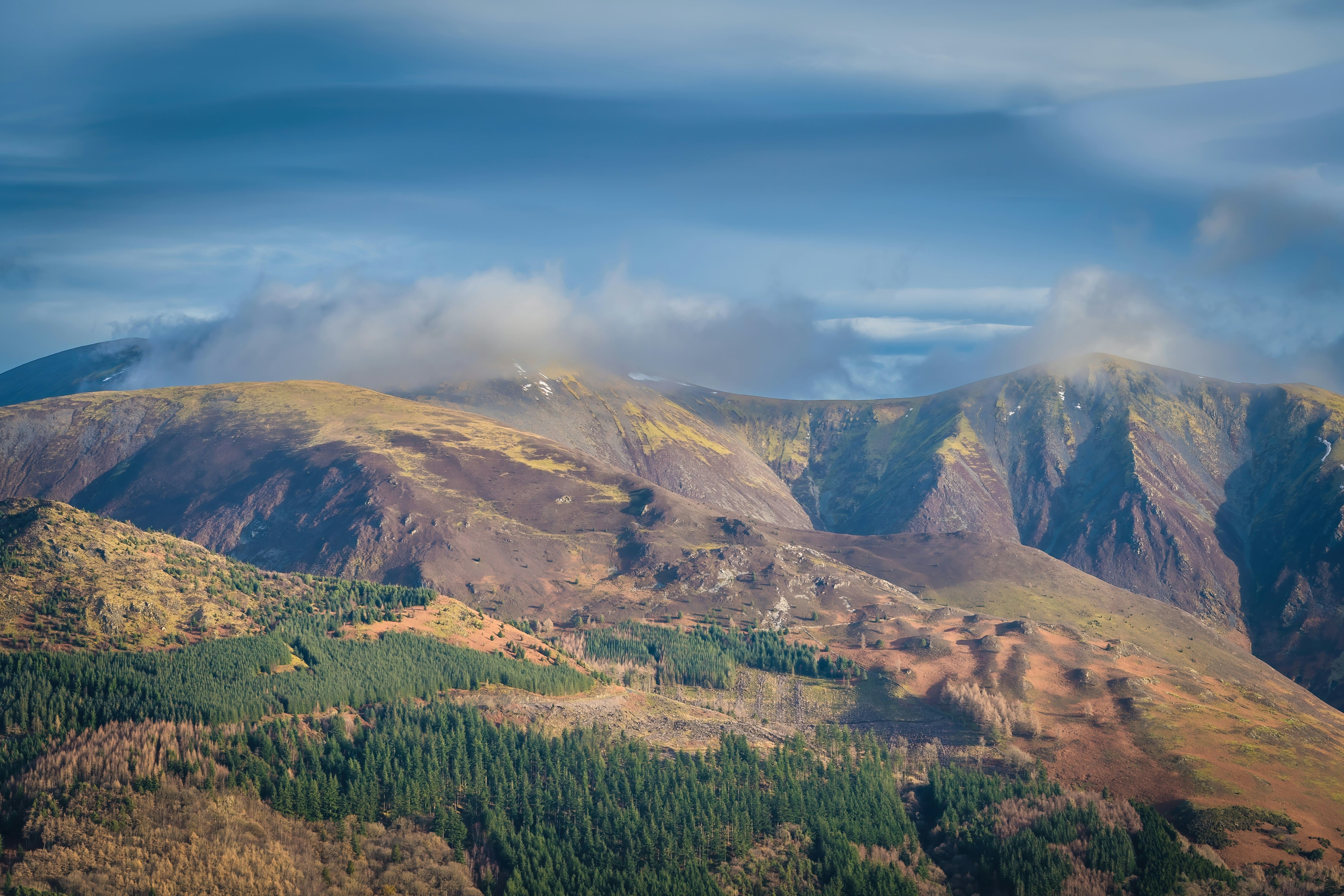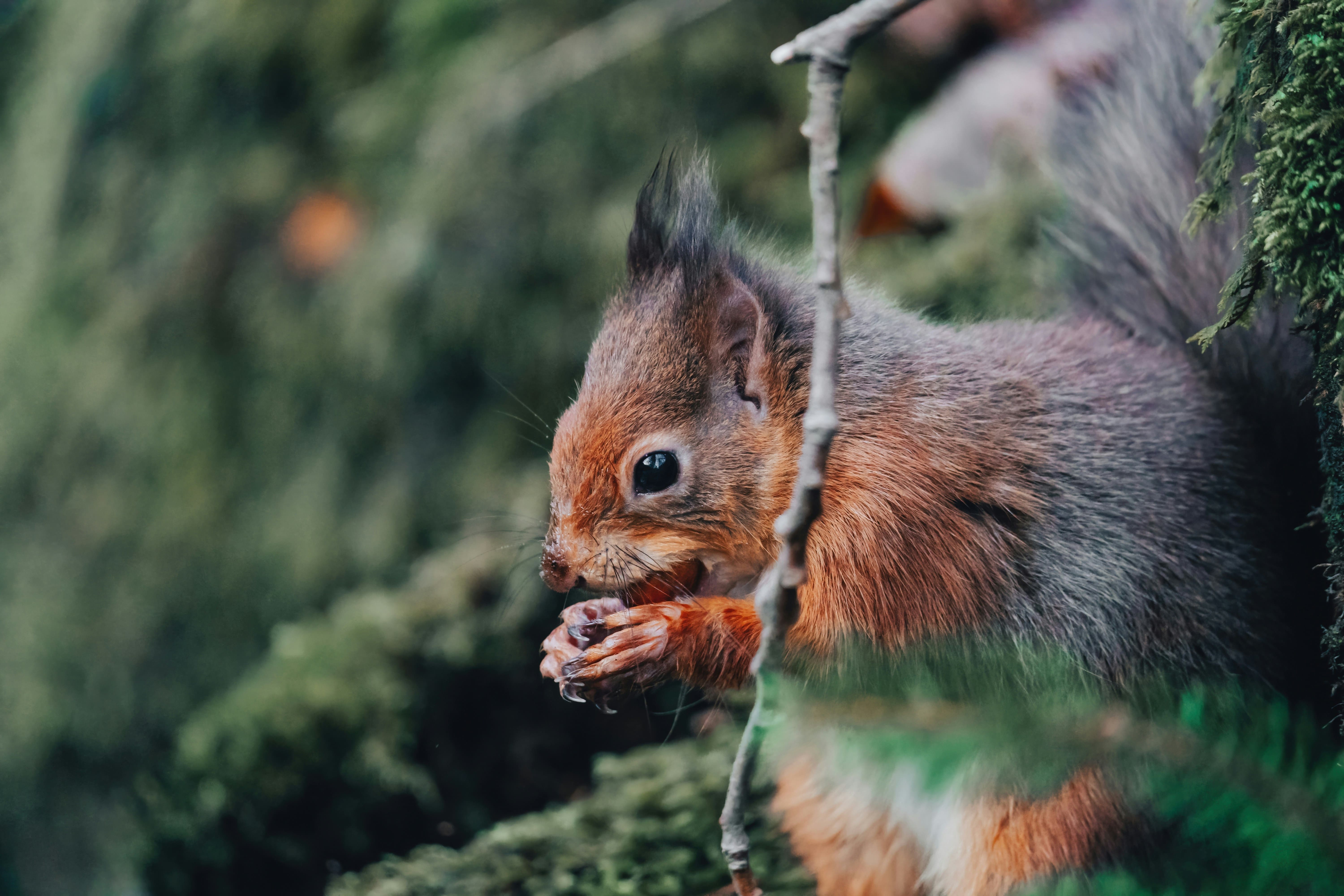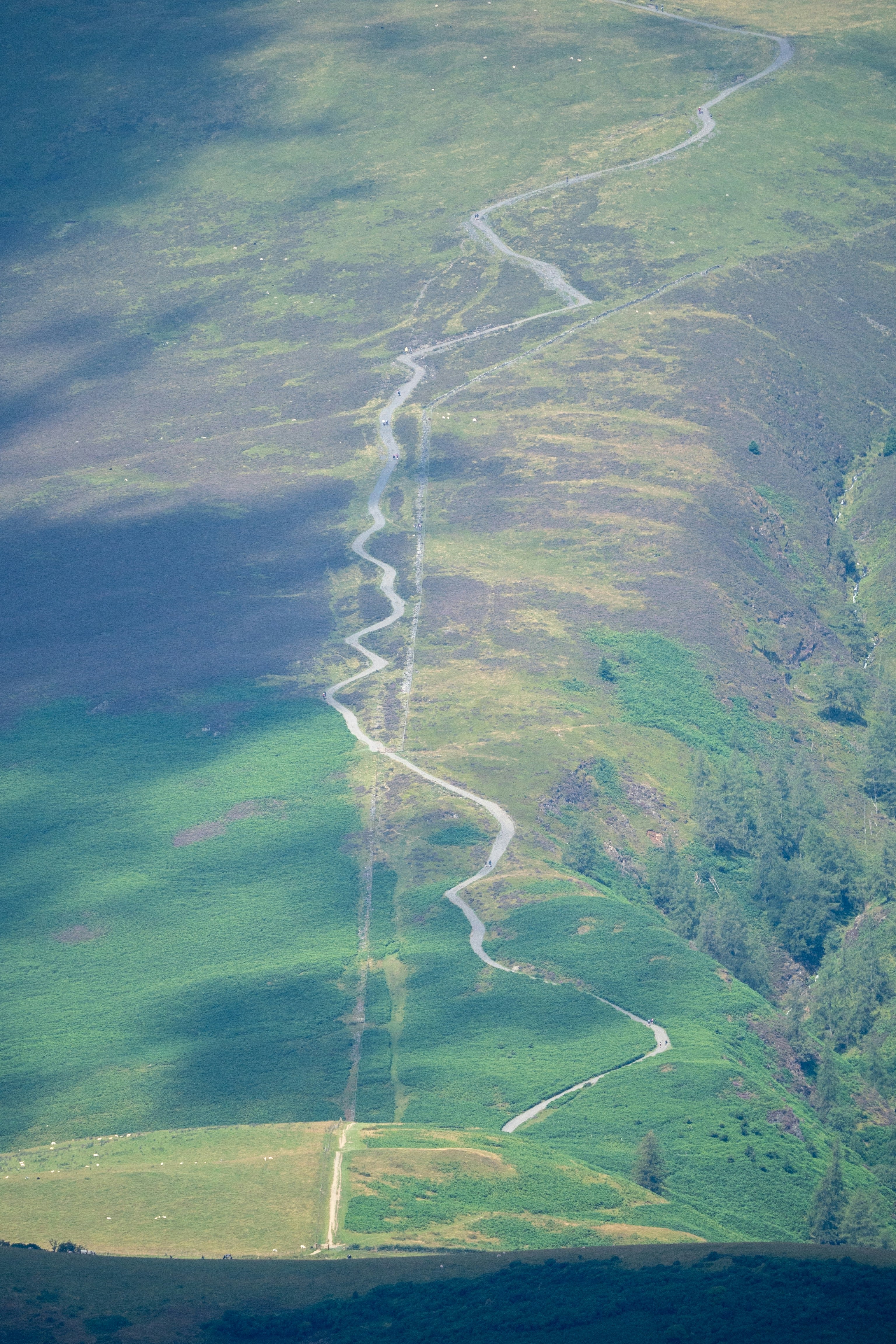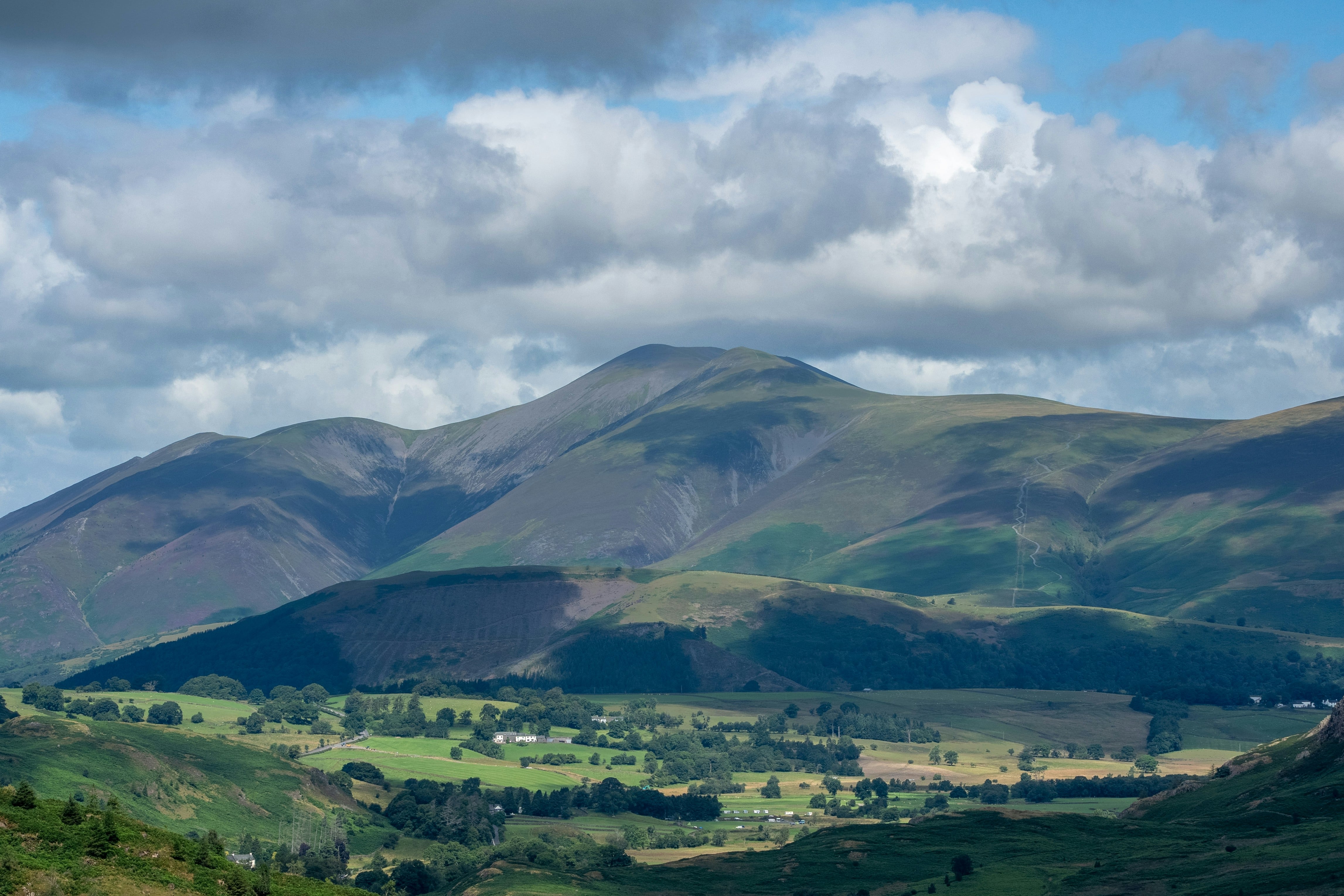Standing tall at a height of 931 metres (3,054 ft), Skiddaw is an impressive and popular mountain located in the Lake District National Park in Cumbria, Northern England. Known as one of the ‘Northern Fells’, Skiddaw makes up part of the dramatic mountain landscape that the Lake District is so famous for.
With its rounded grassy summit and panoramic views, Skiddaw is a fantastic mountain to climb and explore. Subsection 1.1 below outlines key details and statistics about the Skiddaw mountain.
Skiddaw Mountain Key Details
- Height: 931 m (3,054 ft) - making it the fourth highest peak in the Lake District
- Grid Reference: NY 274236
- Other key mountains nearby: Blencathra (868 m), Helvellyn (950 m), Great Calva (690 m)
- Location: Northeast of the town of Keswick in Cumbria
- Made up of Ordovician igneous rock - composed of course slate, lavas and tuffs
- Summit plateau around 300 x 600 metres in area
- Gentler grassy slopes on the south side, steeper rockier slopes to the north
- Circular stone-built wind shelter on the summit built in 1876
With its accessibility and excellent views, Skiddaw is a must-visit destination for any keen hiker exploring the Northern Lake District fells. The sections below cover everything you need to know about this superb Cumbrian mountain.
Walking Routes on Skiddaw
With its rugged beauty and sweeping views, Skiddaw is a hugely popular fell for walkers in the Lake District. There are several classic walking routes that lead to the summit plateau, ranging from gentler trails to more challenging scrambles.
This section outlines key information on the main walking routes up Skiddaw, covering distance, difficulty, time, highlights and more.
Easiest Route - Skiddaw Little Man Path
For those wanting a more gentle walk with superb views, the route up over Little Man is ideal. Details include:
- Length: 6 miles/9.5km
- Ascent: 1050 feet / 320 metres
- Time: 3 - 4 hours
- Difficulty: Easy-moderate - steep in places
- Start Point: Layby on Gale Road (NY 277 234)
- Highlights: Waterfalls, views over Bassenthwaite Lake
- Terrain: Well-defined steep path, some rockier sections
- Finish Point: Skiddaw Summit
This lovely route follows the Ullock Beck stream, passing two waterfalls and quaint Ullock Bridge before climbing up to Little Man - a lower 'sub-peak' of Skiddaw. The final ascent leads through grassy slopes and scrambles to the main Skiddaw summit.
Main Route - Skiddaw House Path
For most walkers this is the standard route to conquer Skiddaw. Key details:
- Length: 7 miles / 11km
- Ascent: 3,000 feet / 915 metres
- Time: 4 - 5 hours
- Difficulty: Moderate-challenging
- Start Point: Skiddaw House hostel (NY 294 172)
- Terrain: Defined path becoming very steep, smooth grass higher up
- Key Point: Junction with main ridge path (NY 267 234)
- Finish Point: Skiddaw Summit
This route follows an old access track behind the remote Skiddaw House Hostel before climbing steeply via Whitewater Dash waterfall to join the main southern ridge path. This leads northwards over Jenkin Hill and Skiddaw Little Man before the final ascent to the summit. Strenuous but one of the most rewarding routes!
Scrambling Route - Whitewater Dash
For hardy hikers wanting a more adventurous scramble route:
- Length: 6 miles / 9.5km
- Ascent: 3,050 feet / 930 metres
- Time: 5 hours
- Difficulty: Challenging - steep, loose scrambling
- Start Point: Skiddaw House Hostel
- Terrain: Faint path, very steep loose rock sections
- Key Point: Whitewater Dash Waterfall
- Finish Point: Skiddaw Summit
This tough route follows a direct line up Whitewater Dash gorge, involving steep loose rock scrambles up the waterfall section before joining a faint ridgeline path leading to the summit. Definitely one for more experienced, well-equipped walkers.
Longer Ridge Routes
There are also longer routes crossing over from other Lake District valleys that traverse Skiddaw's broad whaleback western ridges. These include the routes from Latrigg near Keswick, and from Mungrisdale to the northwest of the mountain. Details can be found on outdoor websites or maps.
With spectacular views throughout, conquering Skiddaw on foot via one of these routes is highly recommended and hugely rewarding. Just remember to check the weather forecast and take appropriate gear for all conditions.
Skiddaw Summit Views and Shelter
Upon reaching the summit after the long ascent, the panoramic views from the top of Skiddaw more than make up for the effort to get there. On a clear day it's possible to see for over 90 miles in every direction from the grassy 300 x 600 metre plateau.
To the north are the distinctive profiles of Carrock Fell and the high Galloway mountains across the Solway Firth in Scotland. Eastwards lie the rounded grassy dome of Blencathra and the grey crags of the Helvellyn range. Southwards, view overlook Bassenthwaite Lake, Derwentwater and the smaller Newlands Valley, with the Scafells and Eskdale Fells visible in the distance.
The views westwards take in the sleepy town of Keswick, with majestic Skiddaw providing the backdrop, along with the purple shadows of Borrowdale, and the remote wasteland landscapes of Buttermere and Crummock Water beyond. These spectacular high-level views showcase the very best of the Lake District fells.
Skiddaw Summit Shelter
To provide some respite from the winds on the exposed summit, there is a small stone-built circular shelter just below the highest point. Built in 1876, this refuge, known as the 'Hugh Ritchie Memorial', provides a safe spot to admire views down over Keswick.
The shelter was constructed using stone from the nearby (and now much depleted) Carrock Mine, and is inscribed with the names of fellwalker Hugh Ritchie's Lakeland climbing friends. It's testament to the long-held allure of Skiddaw's summit.
On calmer days, the grassy landscape and cairn-marked plateau around the shelter offers fine spots for a well-earned picnic lunch before descending. Even on wet and windy days, the summit shelter at least provides a place to add extra layers before tackling the descent.
Geology of Skiddaw
The Lake District famously displays a varied array of different rock types and geological features - evidence of a turbulent geological past spanning over 500 million years. Like many of the higher northern fells, the Skiddaw massif largely comprises hard-wearing Ordovician volcanic rocks, which shape the form of ridges, crags and steep slopes.
Skiddaw Slate
The oldest rock - known as the Skiddaw Slate - forms much of the upper southern portion of the fell. This deep bluish-grey rock originated as mud and volcanic ash on the floor of the ancient Iapetus Ocean nearly 500 million years ago. Intense pressure and heat altered it into hard slate bedrock, which now surfaces in steep craggy outcrops, quarries and gullies on the slopes of Skiddaw.
Skiddaw Latite Lavas
Younger rocks form other sections - produced by explosive underwater volcanoes erupting lava some 467 million years ago. This lava solidified into hard grey andesitic rock known as the ‘Skiddaw Latite’. Resistant to erosion, it produces the long whaleback ridges and rocky crags prominent on Skiddaw, particularly on the northern flanks.
Skiddaw Flags and Tuffs
Associated purple-grey volcanic ash layers hardened into bands of rock called ‘tuffs’, interspersed between the lava flows. On lower slopes underlying shaley mudstones and siltstones form 'flags' and 'slates' which split readily into flat sheets. Historically quarried for roofing slates, these rocks are less durable and underlie the smoother lower grassy slopes of Skiddaw.
Glacial Landscapes
The last major influence was the Ice Age glaciers, which flowed over the Skiddaw massif eroding shattered rock debris and carving the steep-sided groughs which furrow sections of the fell. Meltwater also deepened stream gorges like those along the Ullock Beck and Whitewater Dash. visiting these landscapes allows visualisation of the powerful natural forces which shaped the mountain landscapes.
This varied geology provides the foundation that creates Skiddaw’s distinctive landforms and scenery – yet another facet adding to its allure for hillwalkers, geologists and sightseers alike.
Wildlife on Skiddaw
Despite its summit altitudes and rocky terrain limiting vegetation, Skiddaw sustains a diversity of wildlife species thanks to its range of habitats. Heathery moorlands, rocky slopes and upland tarns each support specially adapted flora and fauna.
Mountain Birds
The airspace around Skiddaw plays host to numerous mountain bird species. Keen-eyed hikers may spot majestic ravens and peregrine falcons soaring on updraughts hunting small birds and mammals. Lower down, red grouse and mountain pipits forage amongst the heather and grassland, with flocks of meadow pipits passing overhead during spring/autumn migrations.
Around rocky scree and summits, look and listen for wheatears, ring ouzels and skylarks. On tarns, keep watch for teal, mallard, curlew, snipe and redshank feeding along the shorelines. Overwintering wildfowl also visit flooded meadows on lower grassy flanks.
Overall an outstanding area for upland birdlife.
Mammal Species
Being largely unforested, larger mammals are generally absent from the upper slopes of Skiddaw. But there are plentiful sheep grazing the lower pastures and fellsides!
Below the summit tourists, smaller mammals thrive amongst rocky areas and grassland, including field voles, common shrews and pygmy shrews - feeding on grubs and insects. Heather moorlands are home to native mountain hares with their coats turning white in winter.
Keener eyes may also spot stoats and weasels hunting for rabbit and rodent prey around the mountain's base and foothills. Overall the combination of habitats supports a diverse array of mammal species on and around Skiddaw.
Reptiles and Amphibians
Despite the chilly climate, Skiddaw’s south-facing slopes provide habitat for wary common lizards to bask on sun-warmed rocks, feeding on insects including butterflies, moths, beetles and spiders.
Boggy flush zones and the fringes of tarns also host common frogs, common toads, and palmate newts during their spring breeding seasons - their tadpoles developing through summer. The pools and wet rocks along tumbling becks may also be home to small populations of rare white-clawed crayfish.
So a closer look reveals that Skiddaw has diverse wildlife secrets to uncover!
Skiddaw in Culture and Media
As one of the most iconic peaks in the Lake District, Skiddaw understandably crops up regularly in artistic and cultural media associated with the area. The classic profiles and striking geology have inspired numerous painters, poets and photographers over the centuries.
More recently Skiddaw has featured in various other media formats reflecting its role as a popular hiking destination and recognisable summit within the national park.
Artistic Depictions
Numerous classic painters and artists have depicted Skiddaw on their canvasses over the years. Key works include ‘Skiddaw from Keswick’ by John Warwick Smith in 1809 capturing autumn tones over Derwentwater. Later, William Heaton Cooper's watercolour ‘Skiddaw from Southerndale’ encapsulates the mountain from the Newlands Valley.
Modern photographer Ashley Cooper has captured vivid sunsets over the fell in his Lakeland photography collections. And Skiddaw’s slopes appear in Carol Douglas’s ‘Blencathra & Skiddaw Ranges’ print using Chinese brushwork techniques. These depictions showcase Skiddaw as an artistic mountain icon.
In Literature & Poetry
As a prominent Lakeland landmark, Skiddaw is referenced in various classic literary works on the area. Descriptions feature in guidebooks by Alfred Wainwright and in passages from author Bill Birkett’s ‘Complete Lakeland Fells’.
It also crops up in Lakeland novels like ‘Dawning’ by Jennifer Young set around Keswick, described as “..the mighty flanks of Skiddaw, sheathed in glowing copper beech woods”.
Skiddaw’s heights inspired classical poets too. Robert Southey climbed and wrote about its views in 1804 and later William Wordsworth penned `To the top of Skiddaw, Sep 7th 1826’ admiring the vista during his ascent. Capturing imaginations through words!
Online & Social Media
As online access to the Lake District grows, Skiddaw now features heavily on tourism websites, image libraries, and across social media platforms.
The @VisitCumbria Instagram showcases photos from the summit and ridge routes, while @GoLakesCumbria Twitter feed references conditions for Skiddaw hikes. On Youtube, ‘Climbing Skiddaw’ videos document vlogger ascents in varying conditions!
Online mapping tools like OS Maps, ViewRanger and PeakVisor also provide route info and enable virtual climbs of the mountain for those yet to experience the slopes and vistas in person.
Visitor Facilities & Local Area
Skiddaw is fortunate to have a range of facilities available for visitors within the locality to support hiking trips and holidays in the area. As well as the classic Lakeland towns dotted around its lower flanks, there are options for accommodation, gear shops, places to eat and transport links.
Base Towns & Villages
Key places to stay for accessing Skiddaw on foot or bike include the popular tourist hub of Keswick, the largest town in proximity complete with plentiful B&Bs, hotels, restaurants, pubs and gear shops. Picturesque Bassenthwaite offers quieter lodges and guesthouses with fine views.
Northwards Mungrisdale or Millbeck offer remote options to access quieter northern paths, while countryside retreats around Uldale or Newlands Valley give southern access. So choices for all budgets and tastes!
Accommodation & Dining
If wanting to stay up on the mountain itself, the historic Skiddaw House Hostel near the main hiking route offers remote, simple, atmospheric lodging within a 16th century hunting lodge. Alternatively, the nearby Skiddaw View Holiday Park in Bassenthwaite has self-catering lodges with fell views and direct footpath access.
Classically cosy Lake District pubs for dining within reach include The Royal Oak at Scales and The Kirkstile Inn at Loweswater to the south. Keswick offers plentiful cafes and bistros for refuelling while the Cumbrian food at the Pheasant Inn at Bassenthwaite is worth a visit after a day on the slopes!
Travel & Transport
Main roads into the local area include the A66, A590 and A591 - converging at Keswick. Bus links connect Keswick with other Lake District towns and villages via the ‘Honister Rambler’ route. Bassenthwaite, Mungrisdale, Millbeck and Uldale have more sporadic rural bus services so checking timetables is advised.
For car-free access, Keswick has a central railway station on the beautiful scenic Cumbrian Coast line. Otherwise for stunning if steep arrival routes, cyclists can ride over via Whinlatter Pass from the west or tackle the long climb over Honister Pass from Buttermere to the south!
Skiddaw - Planning Your Visit
Whether visiting for a short afternoon hike or multi-day backpacking trip, advance preparation helps ensure your Skiddaw adventures run smoothly. With changeable mountain weather and rugged terrain, suitable planning helps avoid issues and make the most of your time exploring this fantastic peak and surrounding fells.
Use the key tips in the subsections below to plan your own Skiddaw trip!
Best Times to Visit
Cumbrian weather is notoriously fickle but visiting during spring through early autumn generally gives more chance of clear ridges and summit views along with snow-free routes. Though winter ascents in snow, ice or wind can still be spectacular!
Weekdays or off-peak times also reduce parking congestion and avoid the summer holiday crowds. But weekends allow stays at hostels like Skiddaw House. Whenever visiting, flexibility helps in case poor weather curtails plans.
Equipment & Clothing Considerations
Sturdy walking boots with good ankle support and grip are essential for carrying loads and negotiating rough terrain. Even in sunny conditions, windproof/waterproof jackets, trousers and gloves are vital for sudden Lakeland weather changes. And don’t forget a hat and sunglasses!
Taking high-energy trail snacks and emergency food is advised to fuel your ascent, especially if tackling longer ridge routes. Even during summer take a hat, gloves and emergency blanket. And always carry OS maps and a compass as mist can descend rapidly.
Finally, consider packing a lightweight backpack, flask for hot drinks, first aid kit, whistle, head torch and survival bag. This gives peace of mind if having to slow down, wait out storms or handle accidents far from assistance. The old fellwalkers’ adage holds true: “better to have and not need, than to need and not have!”
Fitness & Skills
The ascent routes detailed earlier showcase the variety of options on Skiddaw. Choosing one matching your fitness and skills is key. Well-defined trails suit most abilities but very steep, loose sections demand more care. Scrambling the rocky gullies up Whitewater Dash requires experience and confidence on hands-and-knees ascents.
So considering your strengths when deciding on Skiddaw routes avoids struggling far from help. Checking weather forecasts and escape options are also wise precautions before setting off. Overall tailoring plans to your capabilities ensures you can fully enjoy conquering Skiddaw safely.
Responsible Access & Conservation
When visiting, stick to defined paths to avoid damaging delicate upland habitats. Carry out all litter and waste to respect these treasured landscapes. Leave no trace of your passing and tread lightly!
Also give way to farm traffic on access tracks and keep dogs under close control near sheep flocks during lambing seasons. Following these guidelines ensures we all play our role in conserving the glory of superb mountains like Skiddaw for generations to come.
With its rich heritage and panoramic splendour, Skiddaw undoubtedly ranks as one of Lakeland’s most rewarding peaks to ascend. Hopefully this information provides an insightful overview and inspiration to experience its slopes and vistas for yourself! Just remember to go prepared, check conditions, choose suitable routes and tread lightly in order to treasure Skiddaw forever. Enjoy!
Related Articles

Let us know you agree to cookies
We use marketing, analytical and functional cookies as well as similar technologies to give you the best experience. Third parties, including social media platforms, often place tracking cookies on our site to show you personalised adverts outside of our website.
We store your cookie preferences for two years and you can edit your preferences via ‘manage cookies’ or through the cookie policy at the bottom of every page. For more information, please see our cookie policy.
